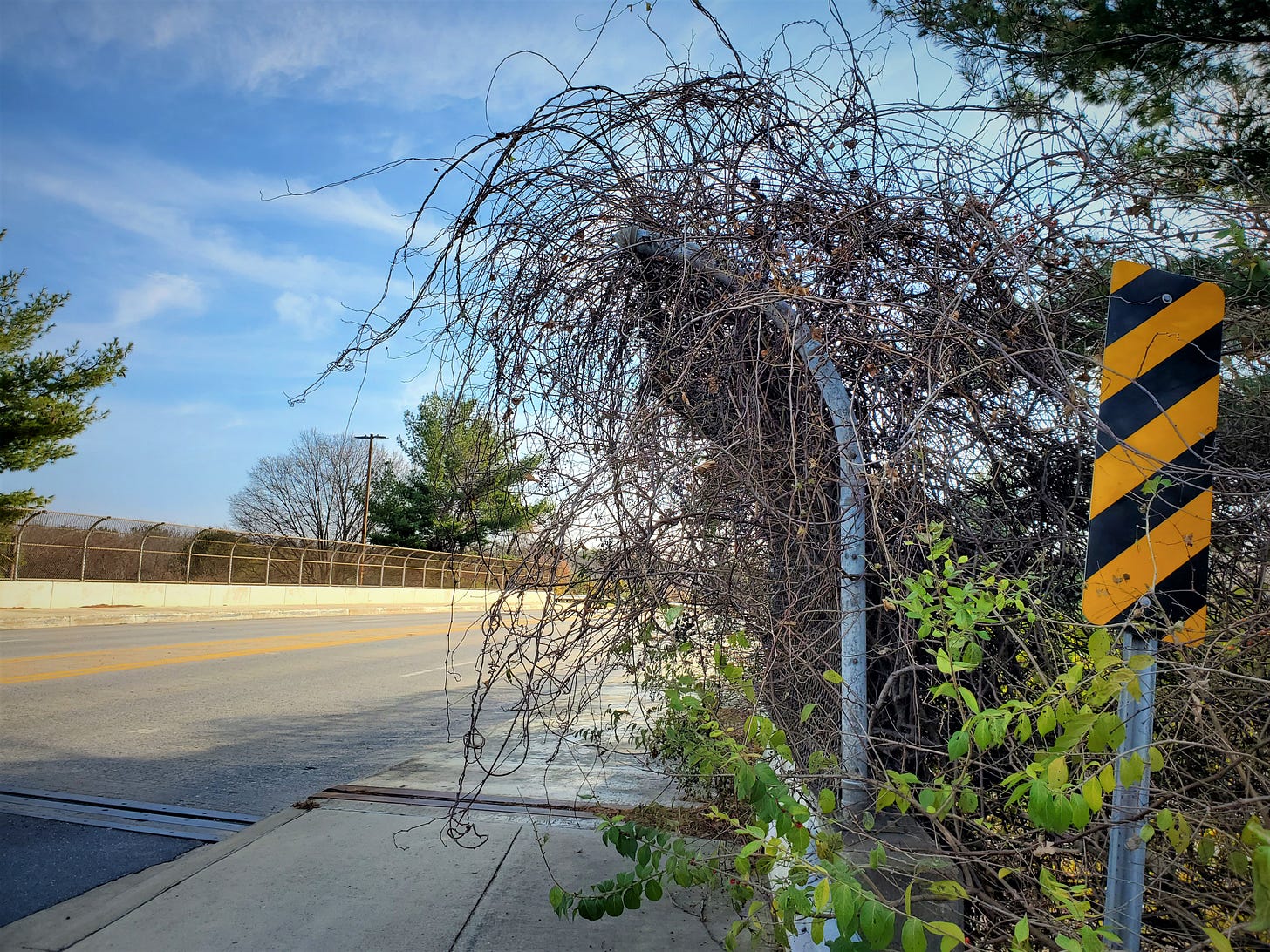This is thematically a follow-up to my piece from Tuesday, so check that out if you missed it.
If you ever played SimCity or RollerCoaster Tycoon or one of those isometric-view computer games, you may remember how the game’s world was a huge square floating in black space. Whenever I reach something in real life that feels like an edge, my mind goes back to those computer games I played as a kid, and I imagine myself walking up to the edge of the playing area and looking at the abyss.
As I’ve begun to feel a sort of “urbanist consciousness,” I’ve realized how much highways can produce these edges for people on foot—places where sidewalks end or become dangerous, where there might as well be a sign telling you to stop, because this is the edge of where you’re allowed to walk.
I certainly knew the feeling: the sense of unease you feel as you approach an underpass or a sidewalk with no buffer between you and the traffic, or when you’re walking in a small town and you reach the intersection where the main street transforms into a “stroad.” You learn to just stop and turn around at these points, because they’re communicating to you that you’re supposed to stop and turn around. I always understood this, but now I understand it more explicitly.
Here are a few “edges” I’ve come upon while out walking and exploring places. This one, not far from my home, is in Herndon, Virginia. A rough but walkable commercial strip is split by the ramps and overpass for a highway. I don’t even like approaching this intersection in a car. People sometimes make fun of the term “human scale,” but if that term is imprecise, it’s not so imprecise that you could ever mistake it for this.
Here’s one in Arlington, Virginia:
And here’s Gaithersburg, Maryland. I took this picture not 100 feet from a recent apartment building. Sure, you can walk, but there’s not much to walk to.
Of course, these aren’t necessarily edges; some are actually the end of a road, where it turns into a ramp and merges into a highway, and others are just momentary interruptions. But they work against seeing a place as a continuous fabric, and they communicate the need to own a car as a prerequisite for getting around comfortably or safely.
There’s a perverse logic here, where all of this heavy infrastructure is built for cars, which intensifies the need for a car to navigate it.
In a fascinating 1973 essay titled “The Social Ideology of the Motorcar,” Marxian philosopher André Gorz argues that “the car wastes more time than it saves and creates more distance than it overcomes.” And in the same year, Catholic priest and philosopher Ivan Illich opined that “motorized vehicles create remoteness which they alone can shrink. They create distances for all and shrink them for only a few.”
When you’re breezing by the landscape in a car, this doesn’t really ring true. But if you’re trying to get by without one, or even just going for a walk, it’s a different story.
Related Reading:
Spread Out or Smashed Together?






